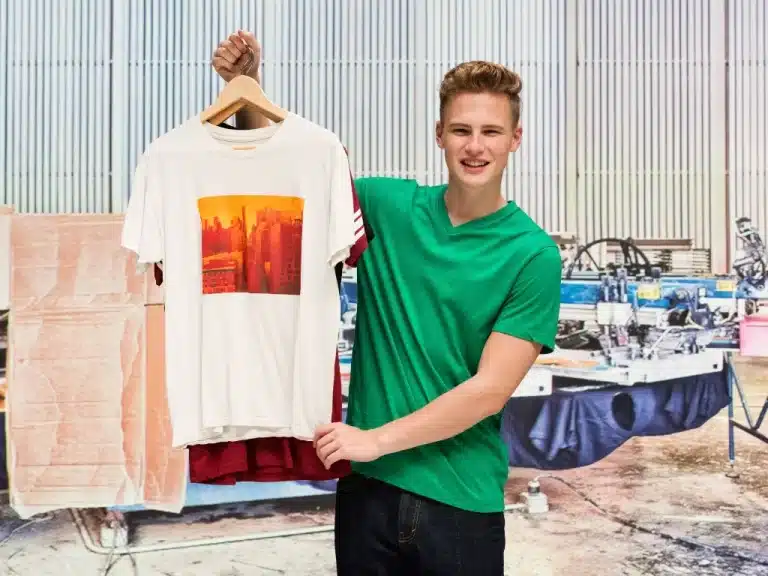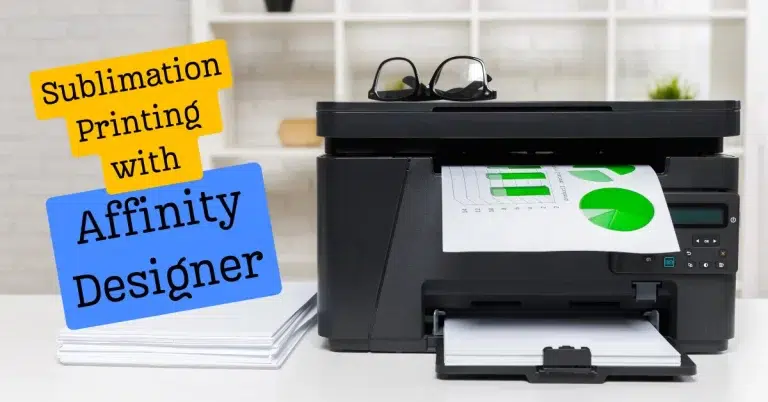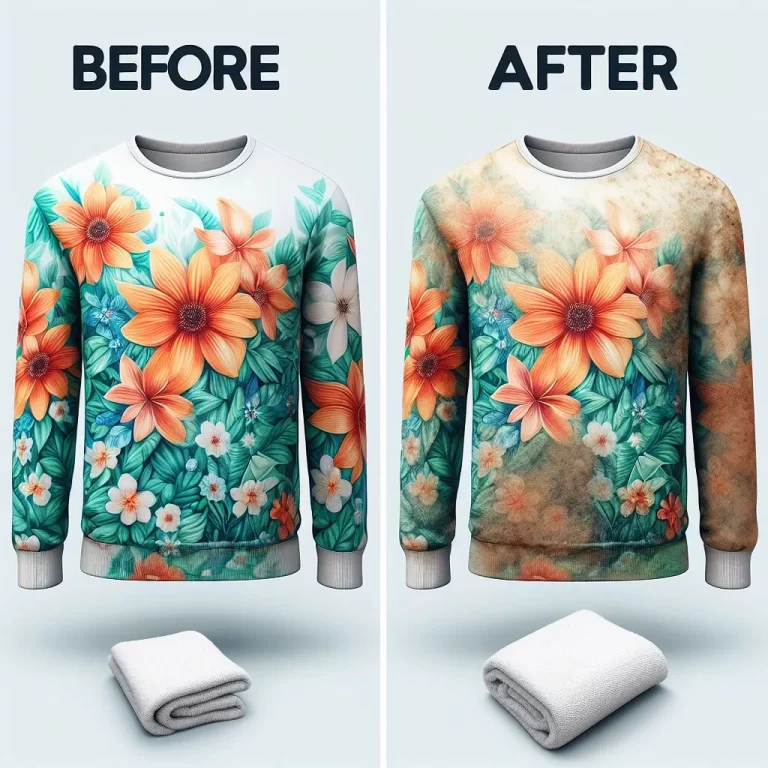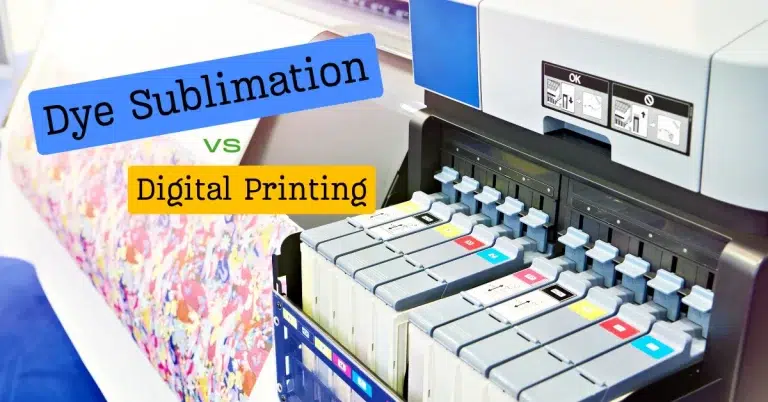Sublimation vs Heat Transfer: What’s the Difference?
The right printing method can have a significant impact on the quality of your custom product, whether it’s t-shirts, mugs, or phone cases. You’re not the only one who’s torn between sublimation and heat transfer. Each method has its advantages, but the challenge lies in identifying which one is most suitable for your requirements.
Sublimation is a great choice for polyester and light-colored materials, providing you with permanent, vibrant prints that won’t peel or crack. Heat transfer is more flexible when it comes to fabric types and is simpler to begin with. It’s possible that the prints won’t last as long, particularly if you wash them frequently.
The key differences, pros, cons, and real-world applications will be broken down in this article, allowing you to make decisions about your next project without secondguessing every step.
🌟 Key Differences: Sublimation vs Heat Transfer
Choose based on durability, cost, and fabric needs. Pro Tip: Sublimation = permanent quality | Heat transfer = budget flexibility
🌈 Sublimation Printing
✅ Becomes part of material
✅ No texture
✅ Best on polyester
✅ Fade-resistant
🔥 Heat Transfer Printing
✅ Sits on fabric surface
✅ Slight texture
✅ Works on cotton/darks
✅ Budget-friendly
📌 Why It Matters
Sublimation Wins When:
Printing white polyester or drinkware – lasts through 50+ washes
Heat Transfer Shines When:
Working with cotton hoodies/dark fabrics – easy small batches
Understanding the Basics
Unlike sublimation, heat transfer gives you more flexibility in fabric choice and works well with both light and dark materials — though you may sacrifice some durability.
What is Sublimation Printing?
Sublimation printing is a chemical process that converts solid dye into a gas without the liquid stage. Using heat and pressure, the gas penetrates the material’s surface and bonds at a molecular level. When the item is cooled, the ink becomes a part of it. It’s embedded deep within, which is why it’s not felt on the surface.

Best used on:
- 100% polyester fabrics
- Polymer-coated hard goods (e.g., mugs, mousepads, keychains)
Common uses:
- Athletic wear – logos and colors stay crisp, even after dozens of washes
- Drinkware and accessories – mugs, coasters, and tumblers with lasting graphics
- Promotional items – giveaways that actually look professional
Just one catch: sublimation only works well on light-colored materials. Dark fabrics? Not a match.
What is Heat Transfer Printing?
Heat transfer printing includes a few different methods, but they all involve applying designs onto a surface using heat and pressure. Think of it as sticking the design on top of the fabric — not inside it, like sublimation.

Most common heat transfer types:
- Heat Transfer Vinyl (HTV) – cut designs from colored vinyl sheets
- Transfer paper – print onto paper, then transfer with a heat press
- White toner transfers – toner-based prints ideal for dark garments
Compatible with:
- Cotton
- Polyester
- Cotton-poly blends
- Canvas and other fabrics
Go-to applications:
- Custom t-shirts and hoodies – great for short runs or detailed logos
- Home décor – pillowcases, tote bags, and wall hangings
- Event apparel – bachelor parties, family reunions, or business branding
Details Comparison of Sublimation and Heat Transfer
The most important factor when choosing between sublimation and heat transfer is its durability, versatility, color range, or cost-efficiency. In short, go with sublimation when quality and permanence are non-negotiable. Choose heat transfer when variety and budget-friendliness take precedence.
Here’s a clear look at how these two stack up side by side.
| Feature | Sublimation Printing | Heat Transfer Printing |
|---|---|---|
| Ink Behavior | Becomes part of the material | Sits on top of the fabric |
| Feel of Print | No feel — completely smooth | Slight texture depending on the method used |
| Fabric Compatibility | Best on 100% polyester and light colors | Works on cotton, polyester, blends, and dark fabrics |
| Durability | Very durable — fade- and crack-resistant | Less durable — may crack or peel over time |
| Color Vibrancy | Bright, vibrant colors (especially on white) | Good vibrancy, but can be muted on dark fabrics |
| Setup Cost | Higher upfront (special printers, inks) | Lower barrier to entry (basic heat press needed) |
| Best For | All-over prints, mugs, sportswear | T-shirts, hoodies, custom event gear |
Why This Matters for You
- If you’re printing white polyester t-shirts or custom drinkware, sublimation gives you professional, long-lasting results that won’t fade after a few washes.
- But if you’re working with cotton hoodies or want to print on dark fabrics, heat transfer offers more flexibility — even if it means replacing shirts a bit sooner.
Key Differences
Process Comparison
- Sublimation: This method uses heat to turn ink into gas, which bonds chemically with the polyester fibers. The result? The design becomes a permanent part of the material, not just something stuck on top.
- Heat Transfer: Whether it’s vinyl (HTV), transfer paper, or white toner, the design is pressed onto the fabric’s surface. That means it sits on top of the fabric, much like a decal.
Material Compatibility
- Sublimation: It shines on light-colored polyester and polymer-coated surfaces. It doesn’t work well with cotton or dark-colored fabrics.
- Heat Transfer: More flexible — you can apply it to cotton, blends, polyester, and even dark-colored garments, depending on the method.
Durability and Feel
- Sublimation: The print becomes part of the fabric, so there’s no texture at all — it feels exactly like the garment. It also lasts longer with no cracking, peeling, or fading over time.
- Heat Transfer: Depending on the method, you’ll often feel a slight texture where the design sits. Over repeated washes, there’s a risk of peeling, cracking, or fading.
Color Vibrancy and Detail
- Sublimation: Known for vivid, full-color, photo-quality results. It’s ideal when you need sharp detail and rich color, especially on white backgrounds.
- Heat Transfer: While quality can still be great, especially with newer technology, it’s not quite as vibrant as sublimation — especially on dark or textured surfaces.
Equipment and Cost
- Sublimation: You’ll need a dedicated sublimation printer, heat press, and special inks. It’s a bigger upfront investment but pays off in output quality.
- Heat Transfer: Can start with a standard inkjet or laser printer and basic heat press. Ideal for beginners or smaller budgets. The entry point is lower, which makes it appealing for home crafters and small shops.
Choosing between the two isn’t about which is better — it’s about what works best for your fabric, budget, and project goals.
Pros and Cons
Sublimation Printing
Pros
- Long-lasting quality – Prints don’t fade, crack, or peel even after many washes.
- Seamless finish – The ink infuses into the material, leaving no raised texture on the surface.
Cons
- Material limits – Works only on light-colored polyester and specially coated items like mugs.
- Upfront investment – Requires dedicated sublimation printers and special inks, which can cost more than basic setups.
Heat Transfer Printing
Pros
- Flexible material use – Can be applied to cotton, polyester, blends, and dark fabrics.
- Budget-friendly start – Lower equipment costs make it a great choice for beginners or small-scale projects.
Cons
- Durability concerns – Designs may crack, peel, or fade over time, especially with frequent washing.
- Surface texture – The transfer layer often leaves a noticeable feel on the fabric, depending on the method used.
If you’re after durability and a clean feel, sublimation might be your best bet. But for those starting out or working with cotton shirts and color variety, heat transfer gives you room to play without breaking the bank.
Choosing the Right Method for Your Needs
Choose the right printing method to achieve your goals, whether it’s at home or building a business.
For Hobbyists and Beginners
If you’re just starting out or printing as a side gig, heat transfer is your go-to. It doesn’t demand expensive gear or special materials, and you can begin with a standard inkjet printer and transfer paper. It’s simple to learn, forgiving with mistakes, and ideal for experimenting on different fabric types at home.
- Why it works:
- Lower initial costs
- Works with common fabrics like cotton
- Easy setup and learning curve
For Professional and High-Volume Printing
Running a print shop or planning to scale? Sublimation wins for quality and efficiency. The prints last longer, colors stay true, and you’ll be able to push out high-volume orders with consistent results. It’s especially great for sportswear, corporate branding, and detailed photo prints.
- Why it works:
- Long-term durability
- Crisp, vivid output
- Efficient for bulk jobs
For Diverse Material Printing
Need to print on cotton, canvas, dark colors, or blended fabrics? Sublimation won’t cut it here. Heat transfer steps up with flexibility across materials and surfaces. Whether it’s a cotton hoodie or a canvas tote bag, heat transfer adapts.
- Why it works:
- Broad compatibility with materials and garment types
- Great for custom orders where polyester isn’t an option
- Offers freedom to work with both light and dark colors
🖨️ Sublimation vs. DTF
Ready to customize mugs, shirts, or bags but stuck choosing between sublimation and DTF? Both pack a punch, but they shine in different ways. Here’s a quick dive to help you decide what fits your vibe.
🌈 Sublimation: Bold and Seamless
Sublimation uses heat to fuse dye into polyester or coated items like mugs, creating vibrant, full-color designs that feel like they’re *in* the material. It’s perfect for photo-quality prints that last—think 1,000+ washes with 95% color retention. But it’s fussy: only light-colored polyester (65%+) or coated surfaces work.
🎥 DTF: Flexible and Fearless
DTF prints onto film, adds adhesive, and sticks to almost anything—cotton, polyester, dark fabrics, even wood. It’s great for versatile projects and pops on any color, but designs have a soft, raised feel and may crack after 200-300 washes if not handled gently.
| Feature | Sublimation | DTF |
|---|---|---|
| 🧵 Material Fit | Light polyester, coated items | Cotton, polyester, blends, dark fabrics |
| 🖌️ Design Feel | Smooth, embedded | Slightly raised, soft texture |
| 🛡️ Durability | 1,000+ washes, no fading | 200-300 washes, may crack |
| 💸 Startup Cost | $500-$1,000 | $600-$1,200 |
| 👍 Best For | Vibrant polyester prints | Multi-fabric customizations |
Got a project in mind? Sublimation’s your pick for bright, long-lasting polyester or mug designs. DTF shines when you want to print on anything from cotton tees to dark hoodies.
Fire up your press and make something epic! 😎
☕ Sublimation vs. Heat Transfer on Mugs
Want to whip up a custom mug that’s all *you*—for cozy mornings or a killer gift? Sublimation and heat transfer are your main players for decorating ceramics, but they’ve got different strengths. Here’s the lowdown on which one’s best for your mug project.
🎨 Sublimation: Vibrant and Built to Last
Sublimation uses dye that melts into a coated mug’s surface, giving you bright, full-color designs—like a photo or wraparound art—that feel smooth. It’s perfect for pro-level looks, but you need a special ceramic or glass mug with a coating, and the setup (printer, inks, mug press) can cost $500-$800. Good news? These mugs stay stunning through 1,000+ dishwasher cycles, per durability tests.
✂️ Heat Transfer: Simple and Budget-Friendly
Heat transfer, like vinyl or transfer paper, sticks designs on top of the mug. It’s awesome for bold names or logos (think “Best Mom Ever”) and works on coated or uncoated mugs. A Cricut and vinyl setup runs $200-$350, but designs might peel or fade after 100-200 washes if you’re not gentle.
| Feature | Sublimation on Mugs | Heat Transfer on Mugs |
|---|---|---|
| 🖼️ Design Quality | Vibrant, photo-quality, full-color | Bold solids, limited colors |
| 🛡️ Durability | 1,000+ dishwasher cycles | 100-200 washes, may peel |
| ☕ Mug Type | Coated ceramic/glass only | Coated or uncoated |
| 💸 Cost to Start | $500-$800 | $200-$350 |
| 👍 Best For | Pro-grade, detailed designs | Simple, affordable projects |
So, what’s the move? If you’re aiming for a mug that looks store-bought and survives daily dishwashing, sublimation’s your star—ideal for Etsy shops or special gifts. Want a quick, cheap project with a simple design? Heat transfer’s your pal, especially if you’ve got a Cricut ready. Either way, pop that mug in a gentle wash cycle first to test it.
Grab your gear and craft a mug that makes every sip feel like *you*! 😊
💰 Sublimation vs. Heat Transfer: Cost Breakdown
| Item | Sublimation Cost | Heat Transfer Cost |
|---|---|---|
| 🖨️ Equipment | $400-$800 (printer, mug press) | $200-$300 (Cricut, heat press) |
| 🎨 Materials | $1-$3 per mug (inks, paper) | $0.50-$2 per mug (vinyl, paper) |
| 📦 Blanks | $2-$5 per coated mug | $1-$4 per mug (coated/uncoated) |
| 💪 Starter Total | $500-$1,000 | $250-$400 |
🔥 Heat Transfer Printers
Want to slap bold logos or names on shirts, mugs, or bags without breaking the bank? A heat transfer printer makes it simple to create pro-looking custom gear at home.
✂️ How It Works
Heat transfer printers (or cutters like Cricut) pair with vinyl or transfer paper. You print or cut your design, then use a heat press to stick it onto fabrics, ceramics, or more. It’s like a sticker that lasts—perfect for solid colors and text.
💪 Why It’s Awesome
They’re budget-friendly—starting at $200-$350—and work on cotton, polyester, or blends, even uncoated mugs. Designs take minutes, but they may peel after 100-200 washes if not applied right.
| Feature | Heat Transfer Printer |
|---|---|
| 🧵 Materials | Cotton, polyester, blends, ceramics |
| 🖌️ Design Type | Bold solids, text, simple logos |
| 🛡️ Durability | 100-200 washes, may peel |
| 💸 Cost | $200-$350 setup, $0.50-$2 per item |
Heat transfer printers are your ticket to quick, versatile projects. They’re great for beginners or anyone wanting affordable custom gear without fancy equipment.
Plug in and start crafting something uniquely yours! 😊





